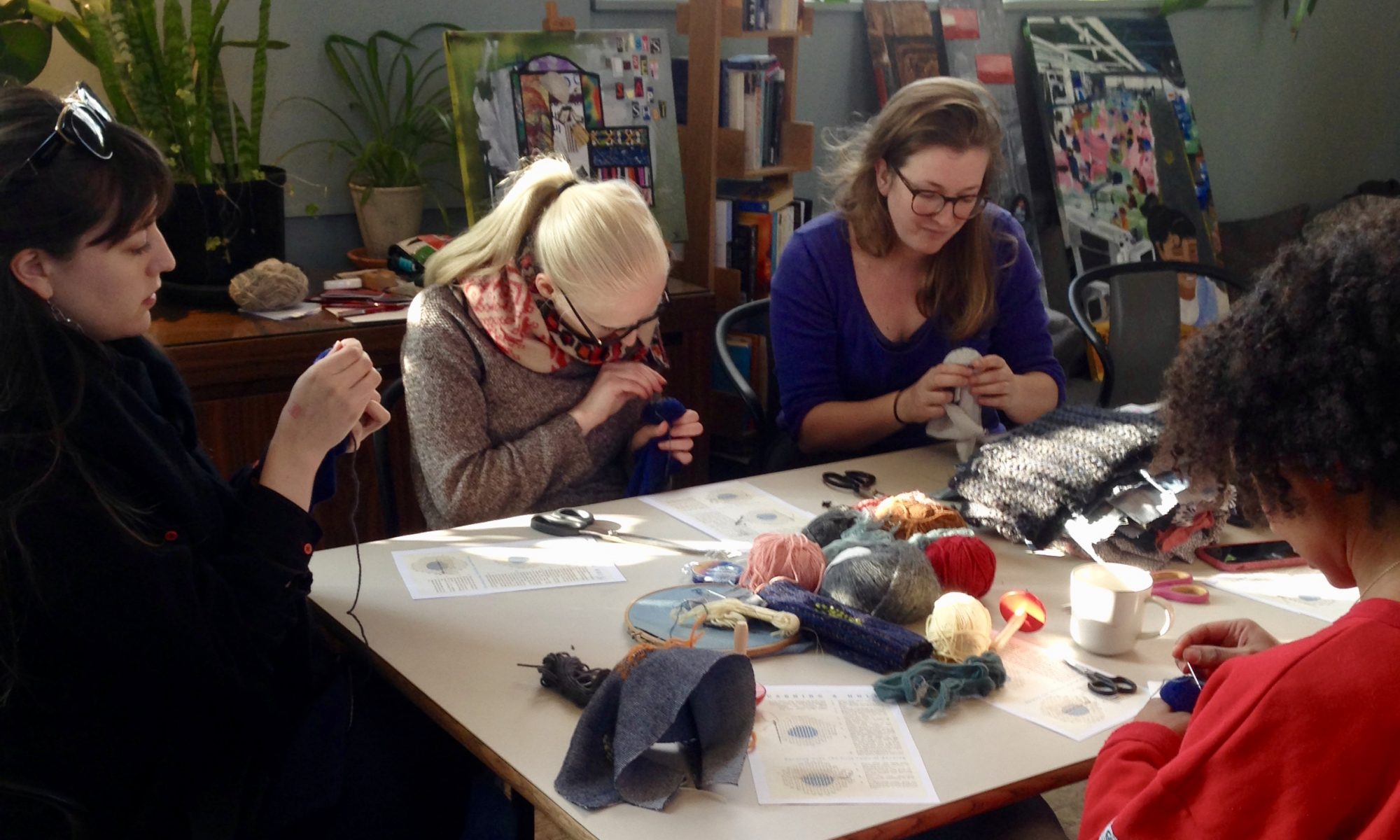Have you made a mask or face covering to help protect yourself and others from Covid-19? You might find it useful to make a bag to keep your face covering in. We have made two of these drawstring bags. One to keep a clean mask in and one to store the worn mask. These instructions will help you make this practical and simple bag.
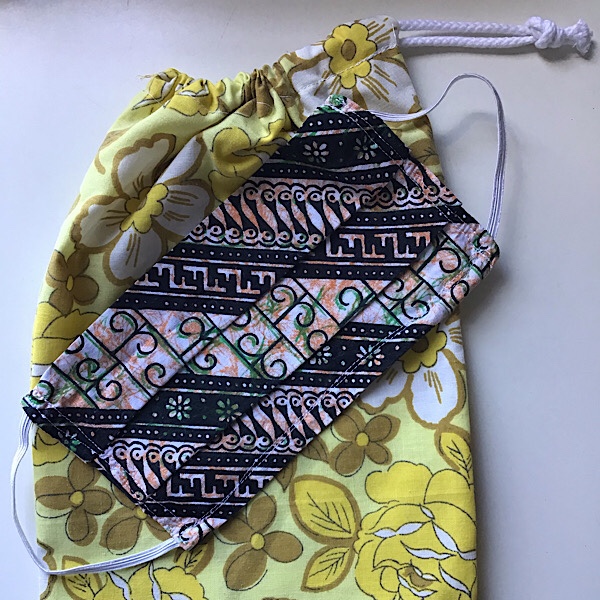
Materials Required
- Sheet of paper (newspaper, parcel paper or A4 piece of paper)
- Scrap of fabric measuring 40 x 60cm (or smaller pieces sewn together to create the same size)
- Paper scissors & fabric scissors
- Sewing thread
- Sewing needle or sewing machine
- Dressmaker pins
- Piece of cord or ribbon measuring a minimum of 45cm
- Iron and ironing board
1. Create a template
Create a template or pattern for the bag from a piece of paper. Draw a rectangle on the paper 20cm x 30cm. Cut out the rectangle using paper scissors. Or use a sheet of A4 paper as the template, it is approximately the same size.
2. Cut out the fabric
Fold the fabric in half, short edge to short edge. Place the short edge of the template so it lines up with the folded edge of the fabric. Pin in place and cut around the edge of the template with the fabric scissors. We created a bigger piece of fabric from 4 smaller squares. We sewed them together to make a piece measuring 40 x 60cm. We finished the raw edges with a zig-zag stitch.
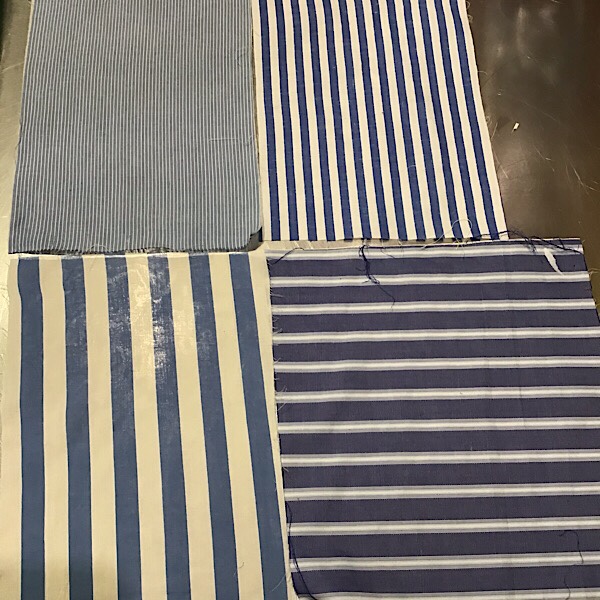
3. Pin the pieces together
Remove the pins from the template. Keep the fabric folded in half. If your fabric has a print or an obvious right and wrong side, ensure the right sides of the fabrics are placed together, facing each other. Pin the two pieces together by placing the pins vertical to the edge. On one of the long edges, place a pin 4cm from the open top edge. Use a different type of pin or make a mark with a pen so you remember this point when you are sewing.
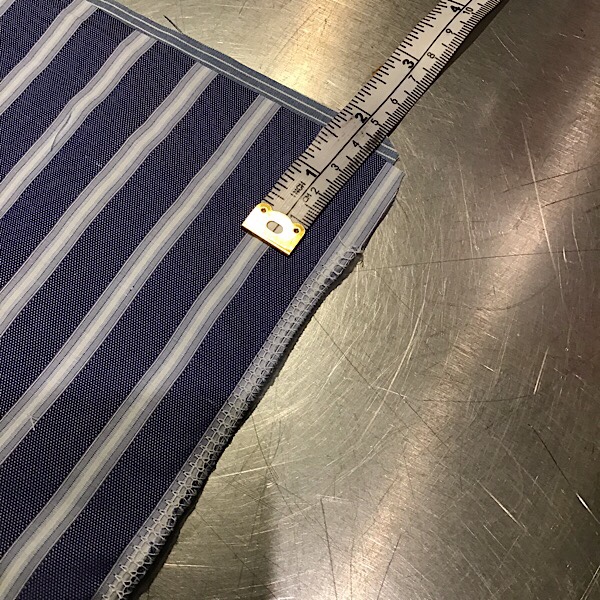
4. Start sewing
It is quicker to make the bags using a sewing machine but it can also be sewn by hand using an backstitch as shown in our video here. Use a 1.5cm seam allowance (the row of stitching should be 1.5cm from the edge of the fabric). Draw a line on the fabric to help keep the line straight (but don’t worry if you wobble a bit, the bag will still be usable). Start sewing the long edge at the mark you made 4cm down from the top to the bottom edge. Sew the second long edge from the top down to the bottom folded edge. Finish the raw edges by sewing a zig-zag stitch along the edge of the fabric, sewing the two edges together. This will stop the fabric fraying when washed. (Use an over stitch if hand sewing)
5. Create a channel for the cord
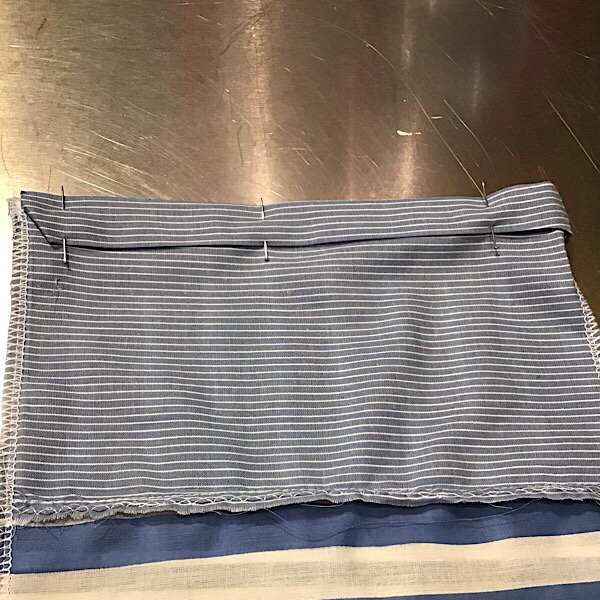
Fold over the top open edge by 1cm, right side to wrong side and press with a hot iron (be careful the steam doesn’t burn your fingers). Fold the edge again by another 3cm. Tuck in the open ends to create the opening for the cord. Press with the iron and pin in place.
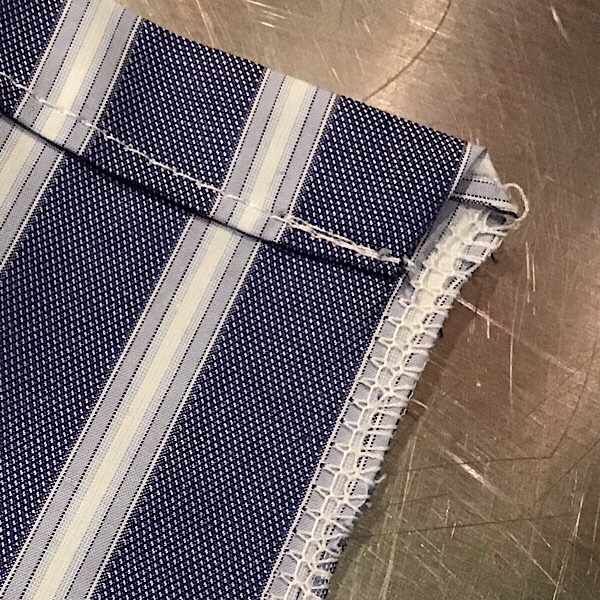
Sew a row of stitching around the edge you have just folded over. Approximately 5mm from the edge. Remove the pins as you sew.
6. Add the cord
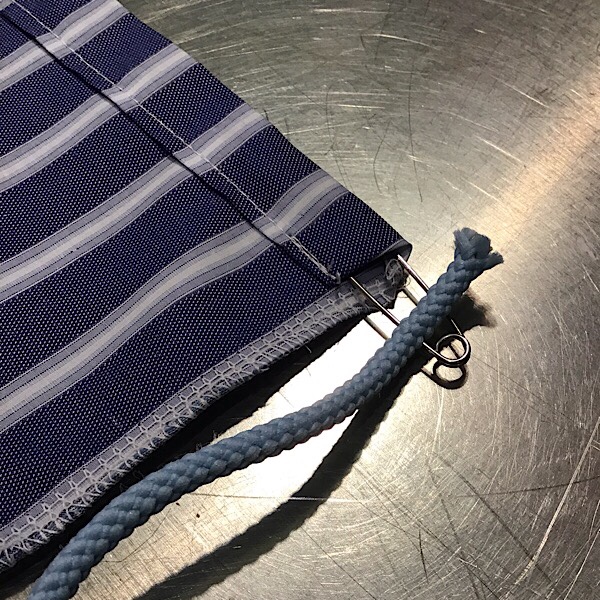
Measure a 45cm length of cord or ribbon (We cut them off the tops of used paper shopping and gift bags). Secure a large safety pin to one end of the cord. Insert the pin into the channel created by the hem.
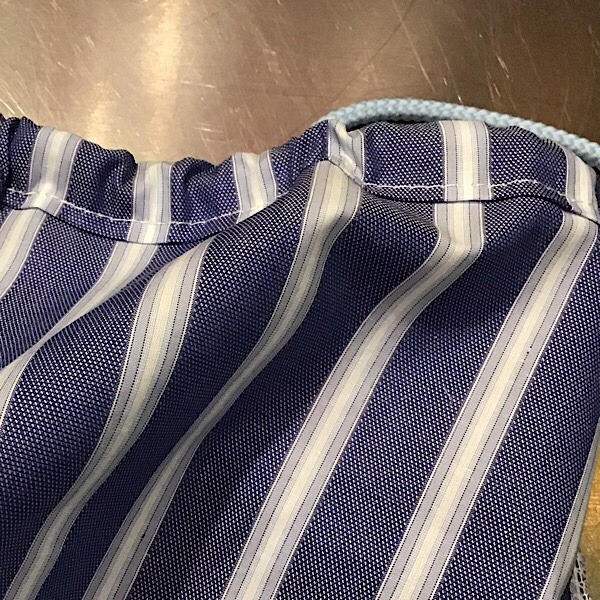
Push the pin through the channel until it reaches the opening the other end of the bag. Be careful not to loose the other end of the cord as you push it through.
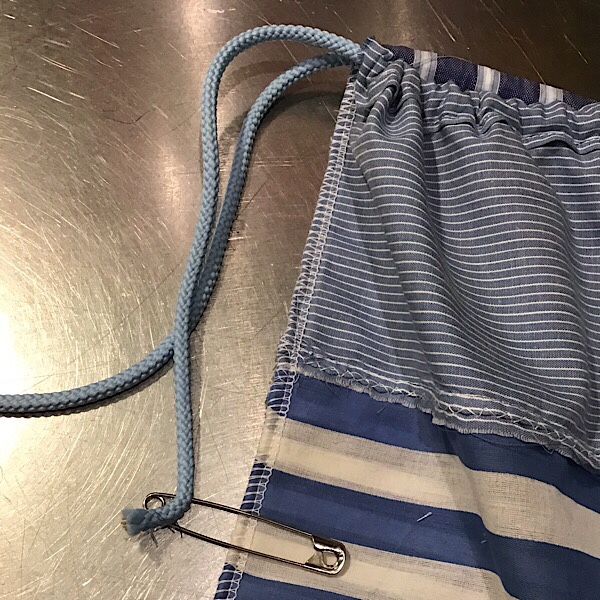
Tie the two ends of the cord together with a knot. Turn the bag the right way out, give it a quick press and it is ready to use! We recommend making two bags and two masks. For example, if you are wearing a mask on public transport, place it in one bag when you get to your destination. Have another clean mask in a clean bag for your return journey. Take the mask out of the bag when washing but it is useful to wash them all together in hot soapy water. Here are our tips on making a mask.

Suitable fabrics
Fabrics that can be washed at a high temperature (between 40 and 60 degrees) are best. Cotton or Polyester/Cotton mix work well. We used scraps of fabric from other projects for our bag but old bedding would work well. As would old T-towels, towels, t-shirts, men’s shirts. If you have a large collection of cotton shopping bags cut up your least favourite. Cut off the handles, press them in half long ways and sew along the opening. Use this instead of the cord.
